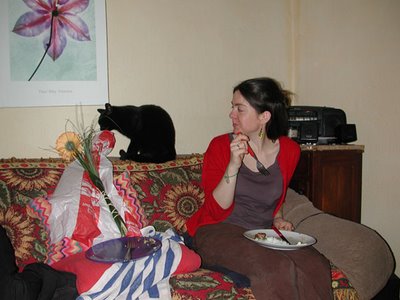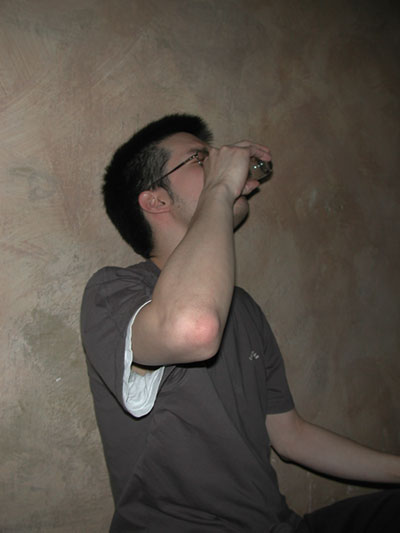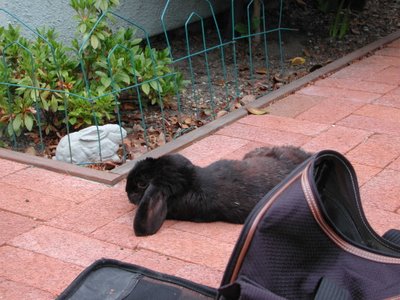The ples (winter ball) phenomenon here is one of enduring interest to Americans, presumably because we know of nothing quite like it. In the attempt to connect it with something familiar, some of my friends talk as though a ples were the same thing as a prom.
Since, as far as I know, proms are a specific type of high-school dance, while Czechs of all ages go to one or another sort of ples, this doesn’t seem correct to me. On the other hand, the more the topic comes up, the more I realize how little I know about the customs and protocol of either one, except that it seems clear I know considerably more about the Czech ples than the American prom.
If you had asked me a year ago what a prom was, I suppose I would have replied that it was an archaic type of formal high school dance that was apparently a big deal in the 1950s. After all, while the prom was still in existence in my high school days, I don’t recall it striking me as anything important or as something one actually expected to attend. I had a vague notion that girls could only attend if invited by boys, and that both parties were expected to wear fancy dress. I’m not sure quite what this was for girls, but in the case of boys, yearbook photos indicated that powder-blue tuxedoes with frilly shirts were de rigeuer. (I extrapolate; our yearbooks were in black and white, but you could see the pastel tuxes on display in store windows. My best friend and I thought that magenta tails would be quite the thing for fashionable orchestra conductors, but I don’t suppose we ever saw such an item in real life.)
Anyhow, while I counted myself reasonably popular in high school (most people were friendly to me and nobody spat on me anymore or wrote insults on my locker), it did not occur to me that the average person would ever attend a prom. No, the average girl went to ordinary, non-invitational school dances, where we stood around hoping to be asked to dance and were not, or occasionally boldly asked a boy to dance and were instantly turned down. Swarms of girls milled restlessly about (we could only dance with one another if it was a fifties dance), while swarms of boys did the same. A small contingent of apparently prematurely engaged couples actually danced (some of them subsequently married). Once a year or so there was a Sadie Hawkins dance, where girls were supposed to invite boys. I am not sure who actually went to these, as everyone I ever asked indicated that he didn’t want to go or had a girlfriend at another school who wouldn’t let him, or some such thing.
Well, apparently things have changed. While Susan, who is not much older than I am, assured me that if she had ever been asked to a prom she would have gone (I daresay I might have gone too if asked), everyone younger seems greatly surprised that anyone could possibly have failed to attend one. This is from a group of people that I would have pegged as decidedly
not prom material in any way shape or form. I mean, no one who could
possibly turn into a filmmaker, a politics and anthropology major, a composer, a musicologist, or even a Germanist seems like prom material to me. But evidently they all went and thought everyone else in the world did too.
I find this utterly mindboggling and a sign of vast generational change.
What have I missed? Would I have gone to a prom had I been born ten years later? (More alarming, would I believe in “dating,” another 1950s mating ritual that I gather has risen from the dead? One devoutly hopes not.)
Alex tells me that in the 1980s, movies were simply filled with proms, leading one to believe that one must go. Well, maybe, but when I was in high school books were full of homecoming, harvest dances, and proms, and this did not lead anyone I knew to think that such things actually related to us. They related to grownups who listened to elderly crooners (Bing Crosby, maybe), or to a small cadre of people to whom we did speak but did not imagine ourselves to be like (people who were allowed out after ten, for one thing).
The only time I can recall anyone talking about prom (or was it homecoming?) at my high school was the year when a guy I knew in orchestra asked a girl I knew in gymnastics to the event. She and her friends, who were freshmen, were excited out of their minds. His friends, who were juniors or seniors, had grave discussions about how he had stupidly asked a girl he didn’t know or like because he couldn’t think of anyone else to ask. This pretty much fit with the idea of prom I had formed from my reading, and did not favorably impress me.
Actually, I do recall another discussion of a formal dance, but it was not about couples. It was instead about how the homecoming (or was it prom?) theme one year was originally going to be a Hispanic one, but was vetoed on the grounds that only 30% of the student body was Mexican and it would be wrong for the school cater to such a small minority. When I think of this now, I have a sensation of acute nausea.
So, I hope that present-day proms are more like the average Czech gymnasium maturita ples, which despite its rampant drunkenness seems to be an event that the entire community including grandma and grandpa enjoys, and where perhaps not all the students dance but there is apparently no requirement to attend with a partner. This seems, however, extremely unlikely.
And, while the Czech ples season is pretty much over and my photos of the posters for university balls turned out very poorly, I am pleased to say that even though some of Hubert’s colleagues haven’t been to a ples since their gymnasium days, there seems to be a ples for every possible social group that exists anywhere in the Czech Republic. If one looks carefully enough, presumably one can find a quadriplegic ples, a transvestite ples, a Roma ples, or even a surrealist ples. I just haven’t looked diligently enough. Maybe next year.













